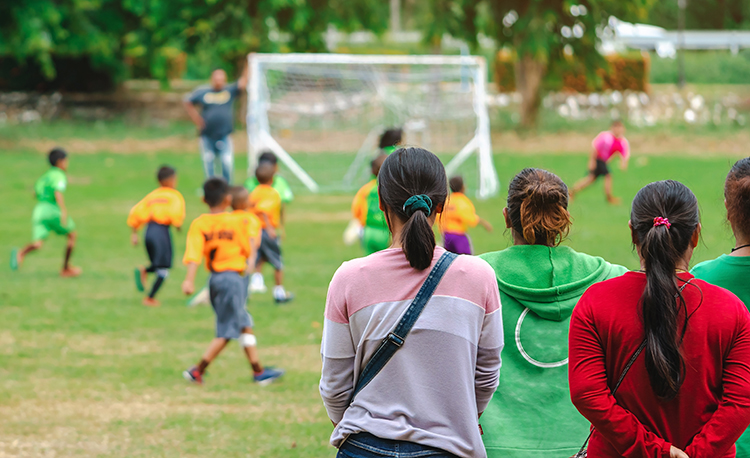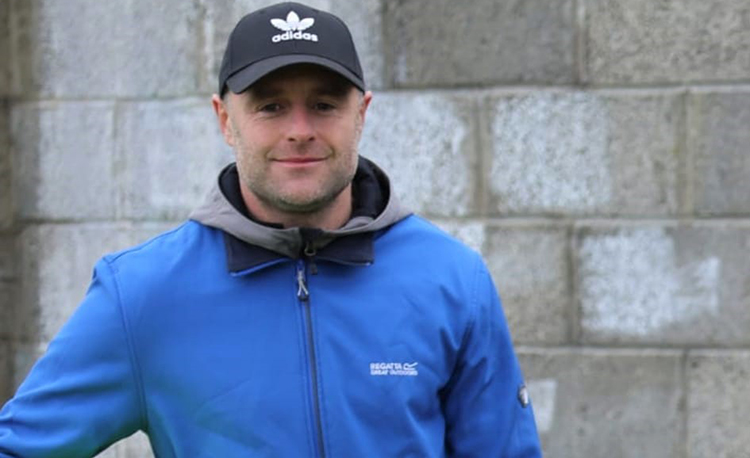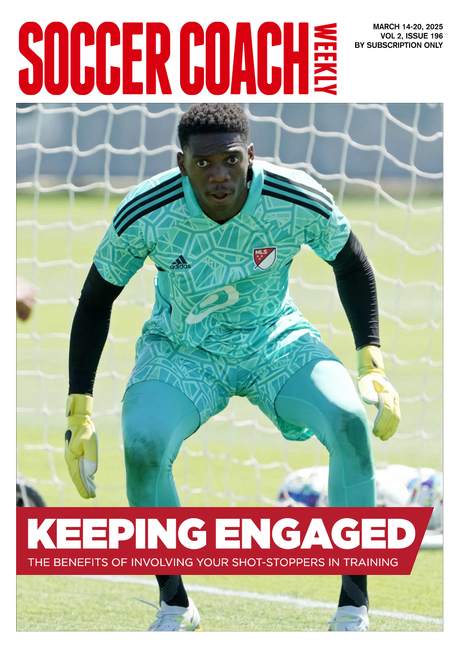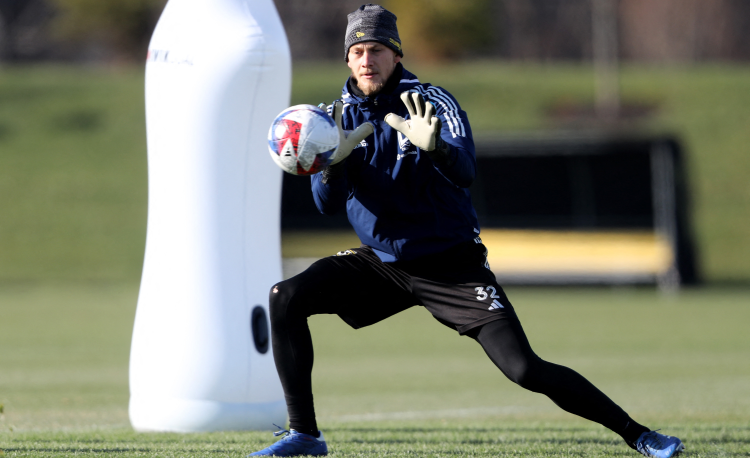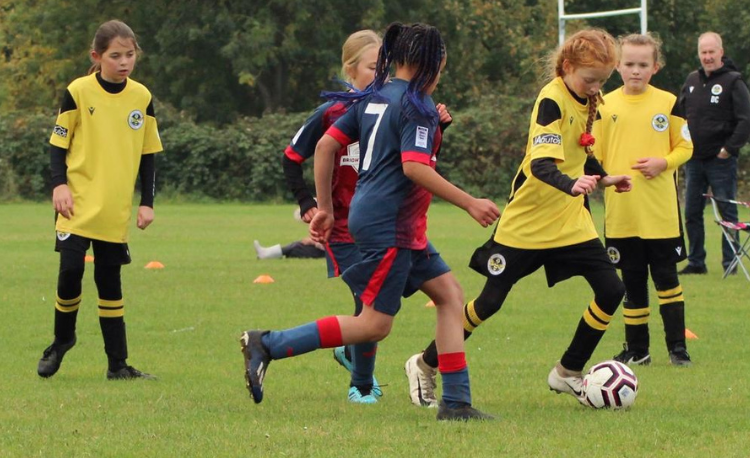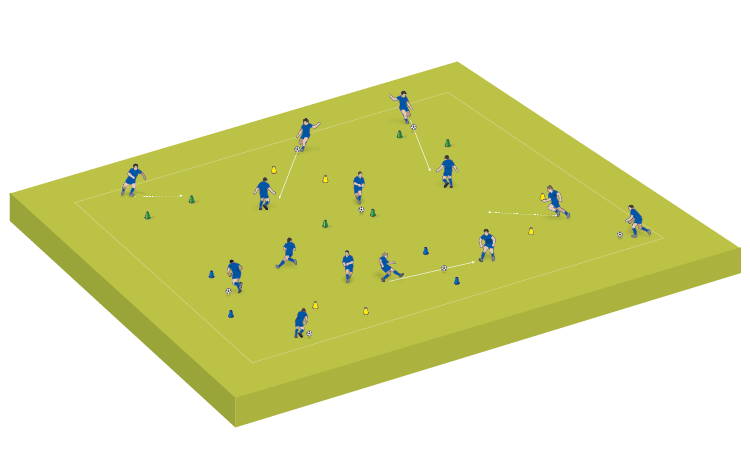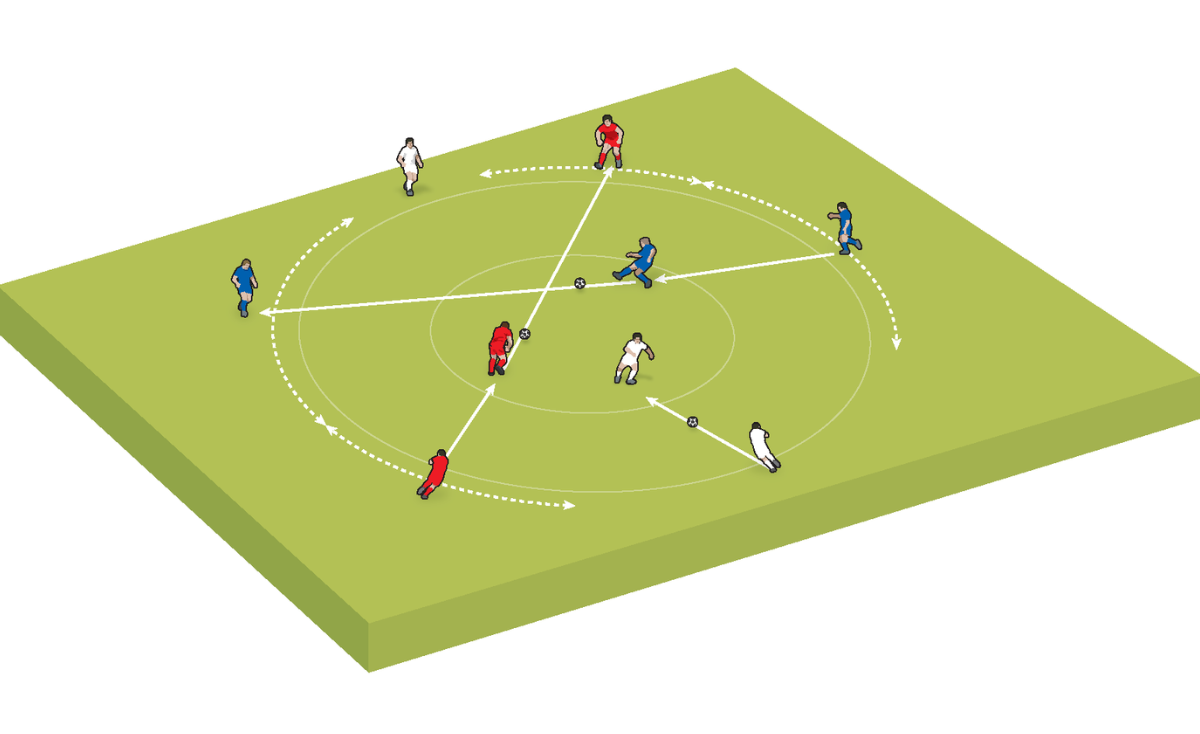What does good coaching look like?
A teacher and multi-sports coach, Shane Smith knows a fair bit about keeping youngsters engaged. Scott Mowberry asks him the all-important question...
Shane Smith is a primary school teacher based in Dublin.
He holds a degree in sports science and health, and a masters in primary education.
Shane says he coaches "probably every day, with a variety of ages". That might be PE, lunchtime soccer, or his children’s teams in the Irish sport of Gaelic football.
As a sporting chameleon himself, Shane is convinced of the benefits of children playing a variety of sports.
Scott Mowberry, from The Soccer Coaching Podcast, asked Shane about the multi-sport approach, what good coaching looks like, and the importance of environment…
SM: So, what is great coaching?
SS: "Coaching is playing and fun and developing opportunities to improve, having chosen to develop at a task or a skill.
"There’s so much crossover between lots and lots of sports. Even the most recent studies are telling us that it’s important for children to have exposure to a number of sports from an early age to develop their all around abilities, be it throwing, catching, running, peripheral vision, spatial awareness.
“I’m a big believer in multi-sport. My children play soccer, Gaelic football and [Irish team sports] hurling and camogie.
"I encourage them to play numerous sports, and we do that in school too. The skillsets do cross over.”
SM: What would you say are some of the essential characteristics of a good coach?
SS: "Fundamentally, good people make good coaches. We always say: ’What is success?’ - well I believe success is to keep as many as possible, for as long as possible.
“If those children bounce in every Tuesday at 6pm, you’re doing a good job. And if you can retain them from when they’re eight or nine, through the teenage years, I think you’re doing a really, really good job.
“The longer I coach, the more I realize that coaching is about retaining players to a later age. I really stand firm on that.
“What makes a good coach? Being relaxed, easygoing, democratic and autocratic. Allowing children the platform to play, develop, and be creative, instead of trying to conform to a certain way you want the game played.
"The longer I coach, the less I talk and the happier I am to hand it over [to the players]..."
“If we look at the movement patterns of our games - be it Gaelic games, soccer, basketball, rugby - they’re quite chaotic.
"They are multi-directional, high-intensity, chaotic opportunities to make decisions under pressure. If we can coach that way, we prepare players that way for a game.
"I don’t believe there’s any skill that we can’t include in a game situation. If you’re passing the ball in pairs, very soon the children will switch off to that - they’ll disengage because we’re not engaging them.
“But if we can set up, in a square, eight or 12 gates - ’one, two, three passes, go to the next gate’ - [and] they’ve got to pass in pairs through the gates, [then] how many can they get through in two minutes?
"They’re dribbling through gates, changing direction, making their own decisions. And that’s that autonomy aspect of coaching."
SM: The challenge for me is, how do I make sessions fun? I guess one of the key characteristics would be creativity?
SS: "Yes, and to engage them in that creativity, to make it enjoyable and to be happy not to talk.
"The longer I coach, the less I talk and the happier I am to hand it over, allowing them the opportunity to make those decisions.
"There’s no point talking all day at training, because, when it comes to the game, they have to make their own decisions.
"As a child is going through 1v1 against a centre-half, there’s little we can do on the sideline in terms of that player’s decision-making.
"It’s affording children opportunities at training to make decisions, problem solve, figure it out, and then they own it. That’s the key, handing it over."
SM: How do you go about trying to create a good environment for your sessions?
SS: "You smile and say hello to everyone by name, for starters. I think it is so important to be relaxed, particularly when we’re coaching children.
“We have to ask ourselves what they need and what they want, not what we need and what we want.
"What’s important now is the children’s development. Give them an environment where we’re not emphasising winning.
"There’s no research to suggest that children are motivated to play sport to win. Winning is nice, of course, but it’s not the motivation to play sport.
“They play sport for so many reasons - to meet friends, to develop socially, and to get better at a task.
"That aspect of developing a skillset is important to children - that’s the intrinsic motivation: ’I want to get better at this skill, for me’.
"With that, regardless of the result at the weekend, they probably say to themselves, ’I’m happy with my performance, I put in some good tackles, made some good passes, and some good scores’.
“There are many barometers to success for children. We can’t just define that by winning only."
SM: How do you find parents impacting on the coaching you’re trying to do? How do you manage that situation?
SS: "I think It starts with defining why you coach and sharing that with the parents. Define what your philosophy is.
"My philosophy would be, when I coach my club team: equal game time and equal opportunity. Everyone knows that.
"If you don’t define why you coach, parents, other coaches, or even children, might define it for you.
"So be really definitive as to why you coach and what you’re about. You’re about the community, you’re about giving each child an opportunity to play. We should never lose sight of that.
"I like to think of empowering parents, actually - bringing them in as coaches, getting the paperwork done and creating a little community within your team. That way, everyone owns it."
"There’s no research to suggest children are motivated to play sport [just] to win..."
SM: How do you deal with players in a team that maybe aren’t as engaged? Not necessarily bad kids, just ones that maybe don’t want to listen when you get them in for a talk...
SS: "I suppose there’s no [one] answer to this, because every single child is unique. There’s wo perspectives: the holistic perspective, and the coaching perspective.
“The coaching perspective is create as many games as possible in small-sided areas where they’re engaged as much as possible. In my experience, a lot of the ’messing about’ will start if they’re waiting for a turn. They’re disengaged in the session.
“We need to look at that and say, ’Okay, how can I do this better so they’re constantly moving, constantly engaged?’.
"If you have 16 children training, you might set up four stations. Station one could be fun games and relay races, station two could be 2v2, station three could be a game around dribbling through cones, and station four could be some shots on goal.
"We’re always moving in those stations, it’s multi-directional decision making.
“The holistic side of it is [if] you know a child always wants attention, well maybe we should give that child attention.
"Maybe we should just take five minutes, because we don’t know what went on in that child’s school day. We’re not privy to their home environment or how the day went for that child. So we can’t really judge.
“Traditionally we might say, ’Get them out for five minutes’. Maybe it’ll be far more of an investment to actually give the child time. Have a chat: ’How are you today? How was school? Looking forward to training? You were brilliant last week.’
“Catch the child doing well, positively reinforce all their attributes."
Related Files
Newsletter Sign Up
Coaches Testimonials

Gerald Kearney, Downtown Las Vegas Soccer Club

Paul Butler, Florida, USA

Rick Shields, Springboro, USA

Tony Green, Pierrefonds Titans, Quebec, Canada
Subscribe Today
Discover the simple way to become a more effective, more successful soccer coach
In a recent survey 89% of subscribers said Soccer Coach Weekly makes them more confident, 91% said Soccer Coach Weekly makes them a more effective coach and 93% said Soccer Coach Weekly makes them more inspired.
*includes 3 coaching manuals
Get Weekly Inspiration
All the latest techniques and approaches
Soccer Coach Weekly offers proven and easy to use soccer drills, coaching sessions, practice plans, small-sided games, warm-ups, training tips and advice.
We've been at the cutting edge of soccer coaching since we launched in 2007, creating resources for the grassroots youth coach, following best practice from around the world and insights from the professional game.
